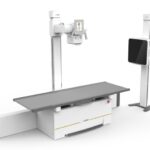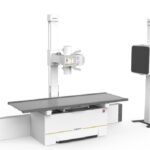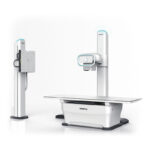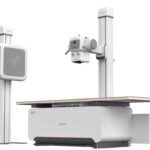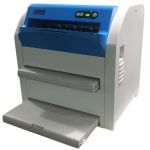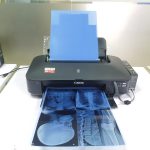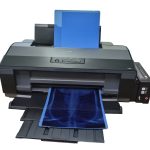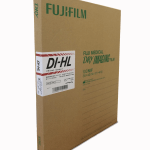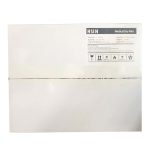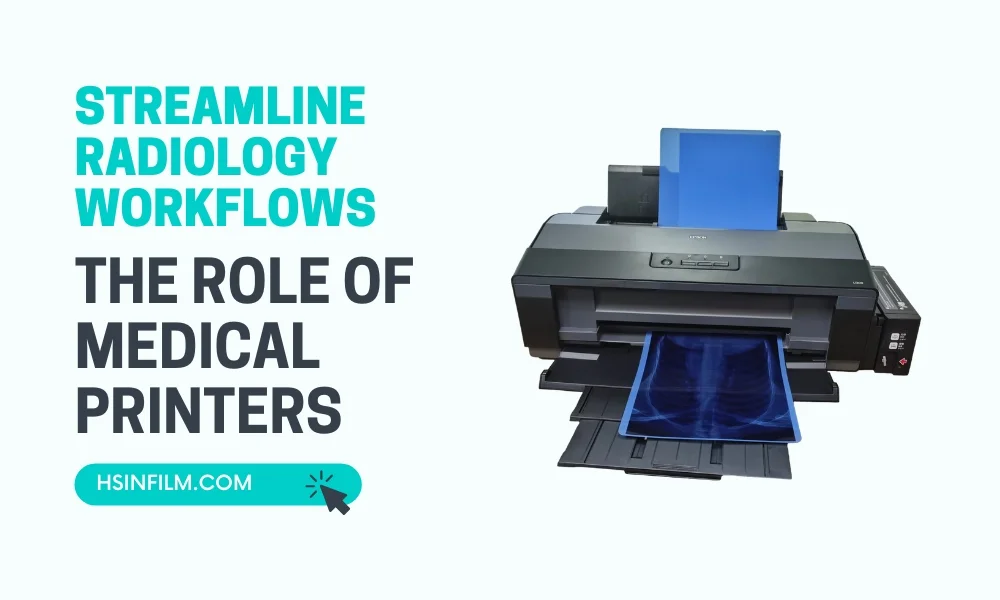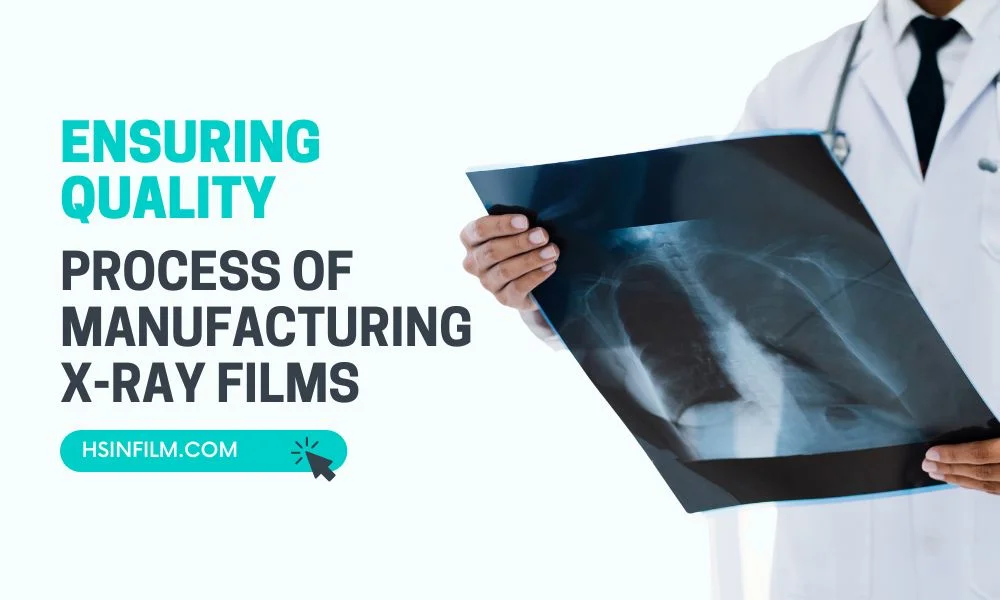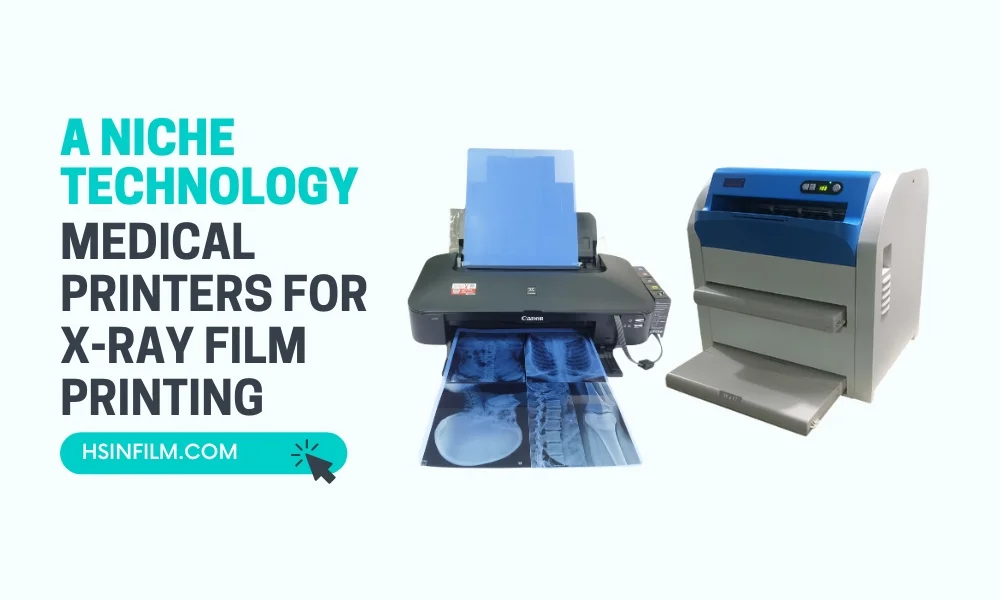Have you ever wondered how medical images are produced with such precision and clarity? In the realm of healthcare, where accuracy is paramount, the role of medical inkjet printers is often underestimated. Join us on a journey through the world of medical imaging, where we talk about how medical inkjet printers ensure clarity in imaging.
Table of Contents: How Medical Inkjet Printers Ensure Clarity?
Introduction
In the fast-paced world of healthcare, precision is not just a virtue; it’s a necessity. The ability to visualize medical images with absolute clarity can be the difference between life and death. But how do we achieve this level of precision? Enter medical inkjet printers.
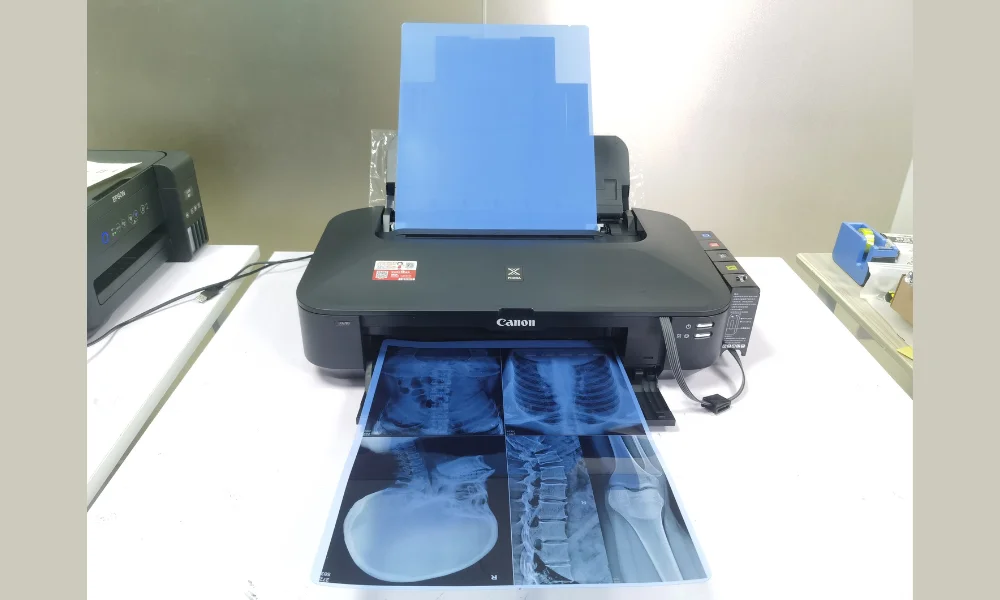
The Role of Medical Imaging in Healthcare
Before we dive into the details of inkjet technology, it’s essential to understand the critical role medical imaging plays in healthcare. From early diagnosis to treatment planning, clear and accurate images are the backbone of modern medicine.
Understanding Medical Inkjet Printers
Let’s get acquainted with our unsung hero: the medical inkjet printer. These specialized devices are designed to handle the unique demands of healthcare settings, producing images that leave no room for ambiguity.
A. What Are Medical Inkjet Printers?
Medical inkjet printers are a class of printers specifically designed for the healthcare sector. They are engineered to meet the stringent demands of producing clear, precise, and high-quality medical images. Unlike conventional office inkjet printers, medical inkjet printers are tailored for applications such as radiology, pathology, and 3D imaging.
B. Key Features of Medical Inkjet Printers
To ensure clarity in medical imaging, these printers come equipped with several key features:
- High-Resolution Printing: Medical inkjet printers excel in high-resolution printing. They can produce images with an exceptional number of dots per inch (DPI), allowing for the fine details in X-rays, MRIs, and other medical images to be accurately reproduced.
- Color Fidelity: Achieving precise color representation is crucial in medical imaging. Whether it’s distinguishing between different tissues in a scan or assessing the colors of anomalies, inkjet technology ensures that the colors are accurate.
- Uniform Dot Placement: Medical inkjet printers maintain precise control over dot placement. This uniformity is essential for consistency in medical prints. It ensures that every print, whether it’s the first or the thousandth, is of the same quality.
- Versatility: These printers are versatile and can handle various medical applications. They can print radiological images for diagnosis, pathology slides for laboratory analysis, and even 3D imaging for surgical planning. This adaptability is what makes them indispensable in the healthcare sector.
C. The Importance of Adhering to Regulations
In healthcare, regulatory compliance is non-negotiable. Medical inkjet printers are designed with adherence to regulations like DICOM (Digital Imaging and Communications in Medicine) in mind. This ensures that the prints generated meet the required standards, which is vital for accurate diagnosis and treatment.
D. Precision and Clarity in Every Print
In the pursuit of precision and clarity, healthcare professionals rely on the consistency and accuracy of medical inkjet printers. These printers are calibrated to ensure that every print is a faithful reproduction of the original image. Whether it’s a subtle abnormality in an X-ray or the vibrant colors in a 3D model, medical inkjet printers are dedicated to delivering a level of clarity that is unmatched.
Precision and Clarity in Medical Imaging
Precision and clarity are not just desirable in medical imaging; they are absolute necessities. In the healthcare domain, where patient diagnoses and treatment plans hinge on the information gleaned from images, even the tiniest ambiguity can have significant consequences. Here, we explore why precision and clarity matter so much in medical imaging and how medical inkjet printers excel in delivering these qualities.
A. Why Precision and Clarity Matter in Medical Imaging
- Accurate Diagnosis: At the core of medical imaging is the need for precise diagnosis. Physicians rely on medical images to identify conditions, abnormalities, and injuries. Ambiguity or lack of clarity in these images can lead to misdiagnoses, delayed treatment, or missed opportunities for early intervention.
- Treatment Planning: Once a diagnosis is established, medical imaging guides treatment planning. Clear and precise images help healthcare professionals determine the best course of action, be it surgery, medication, or other therapies. Treatment plans built on ambiguous or unclear images may not yield the desired outcomes.
- Patient Safety: Patient safety is paramount in healthcare. Precision and clarity in medical images are essential for procedures such as surgeries, where the precise location and extent of an anomaly need to be clearly defined to minimize risks during the operation.
- Reducing Radiation Exposure: In the case of imaging techniques like X-rays and CT scans, clarity ensures that the least amount of radiation exposure is used to capture the required information. This is vital for the patient’s safety.
- Monitoring Progress: In ongoing treatment, medical imaging is often used to monitor the progress of a condition or the effectiveness of a treatment plan. To accurately gauge changes over time, the images must be consistent, clear, and precise.
B. How Medical Inkjet Printers Excel in Delivering Precision and Clarity
- High-Resolution Printing: Medical inkjet printers are engineered to produce images with an exceptional number of dots per inch (DPI). This high resolution ensures that even the minutest details in medical images are faithfully reproduced.
- Color Fidelity: Achieving accurate color representation is crucial for certain medical images. For instance, distinguishing between different tissues in an MRI or assessing the colors of anomalies in pathology slides. Medical inkjet technology ensures that colors are true to life.
- Uniform Dot Placement: These printers are calibrated to maintain precise control over dot placement. This uniformity is crucial for consistency in medical prints. It ensures that every print, whether it’s the first or the thousandth, is of the same quality.
- Regulatory Compliance: Medical inkjet printers adhere to regulations like DICOM (Digital Imaging and Communications in Medicine). This compliance ensures that the prints generated meet the required standards, which is vital for precise diagnosis and treatment.
Also read: How to select the best medical inkjet printer
High-Resolution Printing
To grasp how medical inkjet printers excel in delivering clarity in medical imaging, it’s crucial to delve into the realm of high-resolution printing. At the heart of high-resolution printing lies the concept of “dots per inch” (DPI), which plays a pivotal role in enhancing the visualization of fine details in medical images.
A. Dots Per Inch (DPI) Explained
DPI is a measurement used to express the resolution of an image, and it precisely defines the number of individual dots (ink droplets) that can be placed in a one-inch square. The higher the DPI, the more dots are used, resulting in a sharper and more detailed image.
In the context of medical imaging, here’s how DPI matters:
- Fine Detail: Medical images often contain intricate details. Whether it’s the subtle contrast variations in an X-ray or the nuances in a pathology slide, high DPI ensures that even the smallest details are faithfully reproduced on paper.
- Clarity in 3D Imaging: In 3D imaging, where depth and spatial relationships are crucial, high DPI printing is indispensable. It ensures that the fine structures of anatomical models or surgical plans are vividly portrayed, allowing for a more accurate understanding of complex subjects.
- Accuracy in Radiological Imaging: In radiology, particularly in modalities like MRI and CT scans, high DPI is vital to capture the fine gradations in tissue density. This level of clarity helps radiologists identify anomalies and make precise diagnoses.
B. Impact of Resolution on Medical Imaging
- Enhanced Diagnosis: High DPI printing directly translates to enhanced diagnosis. When radiologists or pathologists review medical images, they rely on the ability to discern fine details, which might indicate abnormalities or anomalies. The higher the resolution, the more confidently they can make these determinations.
- Improved Surgical Planning: In surgical fields, precise surgical planning is paramount. High-resolution images with a high DPI ensure that surgeons can identify crucial structures and make well-informed decisions, ultimately leading to more successful procedures.
- Clear Communication: In the realm of healthcare, clear communication among healthcare professionals is vital. High-resolution prints with fine details help in sharing insights and ensuring that everyone involved in patient care is on the same page.
Color Fidelity and Accuracy
The accuracy of color representation holds immense significance in medical imaging. When it comes to diagnosis and treatment planning, subtle color differences in medical images can be pivotal. Here, we’ll explore how inkjet technology ensures accurate color representation, a vital element in the healthcare sector.
A. The Role of Color in Medical Imaging
- Tissue Differentiation: In various medical images, particularly in pathology and histology slides, accurate color representation is essential to differentiate between different types of tissues. A slight variation in color can indicate abnormalities or specific characteristics of the tissue.
- Anomaly Identification: Certain anomalies in medical images are best identified through color differences. For instance, in angiography, the presence of blood clots may be indicated by color changes. Accurate color representation is crucial for these distinctions.
- Treatment Planning: In treatment planning, the color of specific regions in medical images can be a critical factor. Surgeons and clinicians rely on color cues to make decisions regarding surgical procedures, organ preservation, or radiation therapy.
B. How Inkjet Technology Maintains Color Accuracy
- Color Calibration: Medical inkjet printers undergo meticulous color calibration processes. This ensures that the colors they produce are in line with industry standards. It involves adjusting the printer to reproduce colors as accurately as possible based on predefined color profiles.
- Color Management Systems: Inkjet printers integrate advanced color management systems. These systems ensure that the colors used in printing match the colors in the original image. They consider factors like color profiles, rendering intents, and color correction to achieve precise color representation.
- Ink Formulations: The ink formulations used in medical inkjet printers are carefully engineered to deliver accurate colors. These formulations are fine-tuned to replicate the colors found in the original medical images.
- Quality Control: Quality control mechanisms are integral to inkjet printing. Printers regularly undergo quality checks to verify that the colors they produce remain accurate and consistent over time. This is particularly important in healthcare settings where long-term image storage is common.
C. Significance in Diagnosis and Treatment Planning
- Accurate Diagnosis: For pathologists, radiologists, and clinicians, accurate color representation is vital for making precise diagnoses. It ensures that the colors in images accurately represent the conditions or abnormalities they indicate.
- Treatment Customization: In treatment planning, such as radiation therapy, the color of specific regions can indicate the target areas or areas to be spared. Accurate color representation helps customize treatment plans to the patient’s specific condition.
- Surgeon’s Perspective: Surgeons often review medical images during procedures. The color accuracy in these images is essential for identifying vital structures, and anomalies, and making real-time decisions that impact the surgery’s success.
Dot Placement and Image Consistency
Meticulous control of dot placement is a fundamental aspect of inkjet printing, and it plays a pivotal role in ensuring the uniformity of medical prints. Here, we will discuss how precise dot placement is significant in achieving uniformity in medical prints, which, in turn, is essential for reliable diagnostics.
A. The Role of Dot Placement
- Consistency: Dot placement determines the arrangement and density of ink droplets on the printed image. The more consistent and precise this dot placement is, the more uniform the resulting image. In medical printing, uniformity is paramount for reliable diagnostics.
- Details and Clarity: Precise dot placement is crucial for capturing fine details in medical images. It ensures that every part of the image is faithfully reproduced, without any smudging or misalignment. This is particularly important in radiology and pathology, where even minor deviations can affect interpretation.
- Color Accuracy: In medical prints, accurate color representation is vital. Precise dot placement ensures that colors are accurately reproduced, which is essential for distinguishing between different tissues or identifying anomalies. Accurate color representation is a cornerstone of reliable diagnostics.
B. Significance of Uniformity in Medical Prints
- Consistent Interpretation: Uniform medical prints ensure that healthcare professionals see consistent images. This consistency is crucial for accurate interpretation. When reviewing a series of images, medical practitioners should not be distracted by variations in print quality. Instead, they can focus on the diagnostic content, leading to more reliable interpretations.
- Reduced Errors: Non-uniform prints can introduce errors into the diagnostic process. Irregularities in dot placement can lead to misinterpretation or confusion. Uniform medical prints minimize the risk of such errors, enhancing the reliability of the diagnostic process.
- Comparative Analysis: Medical professionals often need to compare current images with previous ones. Uniform prints make this process more reliable, as changes in the patient’s condition are more apparent when the prints are consistent.
- Quality Assurance: For healthcare facilities, uniformity in medical prints is a sign of quality assurance. It ensures that the printing process is under control and that the printed images consistently meet the required standards. This is particularly important in healthcare, where reliable diagnostics are of utmost importance.
Specialized Printing for Medical Applications
Medical inkjet printers are renowned for their versatility, catering to a wide range of applications in the healthcare sector. Their adaptability is evident in various medical fields, each benefiting from the precision and quality of inkjet technology. Here, we’ll provide real-world examples to illustrate the versatility of medical inkjet printers.
A. Radiology
- X-ray Images: In radiology, medical inkjet printers are employed to produce high-resolution X-ray images. These prints are crucial for radiologists to analyze bone fractures, detect abnormalities, and guide interventional procedures. The versatility of inkjet printers allows for the clear reproduction of X-ray images, which is pivotal in accurate diagnosis.
B. Pathology
- Histology Slides: Pathologists rely on precise, color-accurate prints of histology slides. These slides contain tissue samples from patients, and the color representation is crucial for identifying specific cellular structures, making diagnoses, and monitoring treatment responses. Medical inkjet printers excel in producing uniform and detailed histology slides.
C. 3D Imaging
- Anatomical Models: In 3D imaging, such as CT and MRI scans, inkjet printers play a role in creating anatomical models. These models are used in surgical planning, medical education, and patient communication. For instance, a surgeon can use a 3D model printed by an inkjet printer to plan complex orthopedic surgery, ensuring precise and successful outcomes.
D. Dental Imaging
- Dental Radiographs: In dentistry, digital radiography is widely used. Inkjet printers produce clear and accurate prints of dental radiographs, aiding dentists in diagnosing oral health conditions, planning treatments, and educating patients about their dental health.
E. Ophthalmology
- Retinal Images: Ophthalmologists utilize inkjet printers to produce high-quality prints of retinal images captured during eye examinations. These prints assist in the diagnosis of eye conditions, the monitoring of retinal health, and the documentation of patient records.
F. Wound Care
- Wound Photography: In wound care, the use of medical inkjet printers is essential for documenting the progress of wound healing. Healthcare professionals can capture high-resolution images of wounds and print them for patient records, allowing for accurate assessment and treatment adjustments.
G. Research and Medical Education
- Medical Illustrations: Medical inkjet printers are instrumental in producing medical illustrations for research, publications, and educational materials. They provide vibrant and accurate representations of anatomical structures, helping researchers and educators convey complex medical concepts.
Benefits for Healthcare Professionals
The integration of medical inkjet printers in healthcare settings simplifies the workflow of healthcare professionals, offering unparalleled convenience and reliability. These printers have become invaluable tools in medical imaging, and here, we will explore how they contribute to the efficiency and effectiveness of healthcare processes.
A. Convenience in On-Demand Printing
- Immediate Access to Images: Medical inkjet printers enable on-demand printing of images. This means that healthcare professionals can access patient images and reports instantly, reducing the time spent waiting for physical copies. In urgent situations, such as emergency room cases or surgical procedures, this quick access to images can be a matter of life and death.
- Eliminating Delays: Traditional film-based printing often involved lengthy processing times, which could cause delays in diagnosis and treatment. Medical inkjet printers remove these delays, ensuring that healthcare professionals can access the images they need precisely when they need them.
B. Enhanced Diagnostic Precision
- High-Resolution Printing: The exceptional resolution capabilities of medical inkjet printers result in images with exceptional clarity and detail. This level of precision is vital in radiology, pathology, and other diagnostic fields. It ensures that healthcare professionals can make accurate diagnoses and treatment decisions based on reliable image quality.
- Accurate Color Representation: In healthcare, color accuracy is essential. Medical inkjet printers faithfully reproduce colors, which is particularly important in fields like pathology where subtle color variations can indicate specific conditions or anomalies.
C. Efficient Information Sharing
- Digital Record Keeping: Medical inkjet printers facilitate the transition from analog to digital record-keeping. This allows healthcare professionals to store and share images electronically, reducing the physical storage requirements and enhancing accessibility for remote consultation.
- Telemedicine: The convenience of inkjet-printed images extends to telemedicine. Healthcare professionals can share images with specialists in real time, seeking expert opinions and making collaborative decisions that benefit the patient.
D. Cost-Effective Solutions
- Reduced Film Costs: Medical inkjet printers reduce the need for expensive film and chemicals used in traditional radiography. This not only saves costs but also contributes to environmental sustainability.
- Maintenance Efficiency: These printers are designed for efficiency in terms of maintenance. They are user-friendly, and many routine maintenance tasks can be performed in-house, minimizing downtime.
E. Compliance and Security
- HIPAA Compliance: Medical inkjet printers often come equipped with security features and compliance measures. This ensures that patient information remains secure and that healthcare facilities adhere to regulations like the Health Insurance Portability and Accountability Act (HIPAA).
- Audit Trails: The use of digital images and prints allows for the creation of audit trails, providing a transparent record of who accessed patient information and when. This accountability is crucial in healthcare settings.
Regulatory Compliance and Quality Assurance
Compliance with regulatory standards is non-negotiable in healthcare, and medical inkjet printers play a crucial role in ensuring adherence to regulations like DICOM (Digital Imaging and Communications in Medicine). Here, we’ll highlight how these printers maintain quality assurance while adhering to stringent regulatory standards.
A. Ensuring DICOM Compliance
- DICOM (Digital Imaging and Communications in Medicine): DICOM is the international standard for medical imaging, ensuring the interoperability and exchange of medical images and associated information. Medical inkjet printers are designed to be fully DICOM-compliant, meaning they can seamlessly integrate with other DICOM-compliant devices, such as imaging modalities and picture archiving and communication systems (PACS).
- Consistent Image Quality: DICOM-compliant medical inkjet printers are calibrated to maintain consistent image quality according to DICOM standards. This calibration is vital in ensuring that printed images accurately represent the original digital images, upholding the integrity and clinical value of the diagnostic content.
B. Quality Assurance Measures
- Regular Quality Control: Medical inkjet printers undergo regular quality control checks to ensure that they meet the required standards for image quality and performance. These checks help identify and address any deviations promptly, guaranteeing that the printers consistently produce high-quality, diagnostic-grade images.
- Color Management: Color accuracy is paramount in healthcare, especially in fields like pathology and dermatology. Medical inkjet printers incorporate advanced color management systems to ensure that colors are faithfully reproduced, allowing for accurate diagnoses and treatment decisions.
C. Security and Compliance
- HIPAA Compliance: Medical inkjet printers often include features that ensure compliance with regulations like HIPAA (Health Insurance Portability and Accountability Act). These features include secure printing, user authentication, and encryption to safeguard patient information and maintain data privacy.
- Audit Trails: The use of digital images in conjunction with medical inkjet printers allows for the creation of audit trails. These trails provide a transparent record of who accessed patient information and when, enhancing accountability and compliance with regulatory requirements.
D. Streamlined Workflow
- Efficient Data Management: Medical inkjet printers assist in the efficient management of medical images and reports. They allow for the seamless integration of images into electronic health records (EHR) systems, eliminating the need for time-consuming manual data entry.
- Convenient Record Keeping: By producing high-quality printed images, these printers contribute to reliable record keeping. This is vital for maintaining an accurate patient history and ensuring compliance with documentation standards.
E. Telemedicine Support
- Telemedicine Compatibility: In an era of expanding telemedicine, medical inkjet printers support telehealth initiatives by ensuring that images and reports can be easily shared with remote specialists while adhering to telemedicine regulations.
Conclusion
In our exploration of the world of medical inkjet printers, we’ve delved into their remarkable capabilities, versatility, and compliance with regulatory standards. These advanced devices have proven to be indispensable in healthcare, and their role in ensuring clarity in medical imaging cannot be overstated.
Medical inkjet printers serve as the silent partners in the quest for precision and accuracy in healthcare. For accurate and precise medical imaging, HSIN Film offers high-quality medical inkjet printers for you. Order now at the best price!

